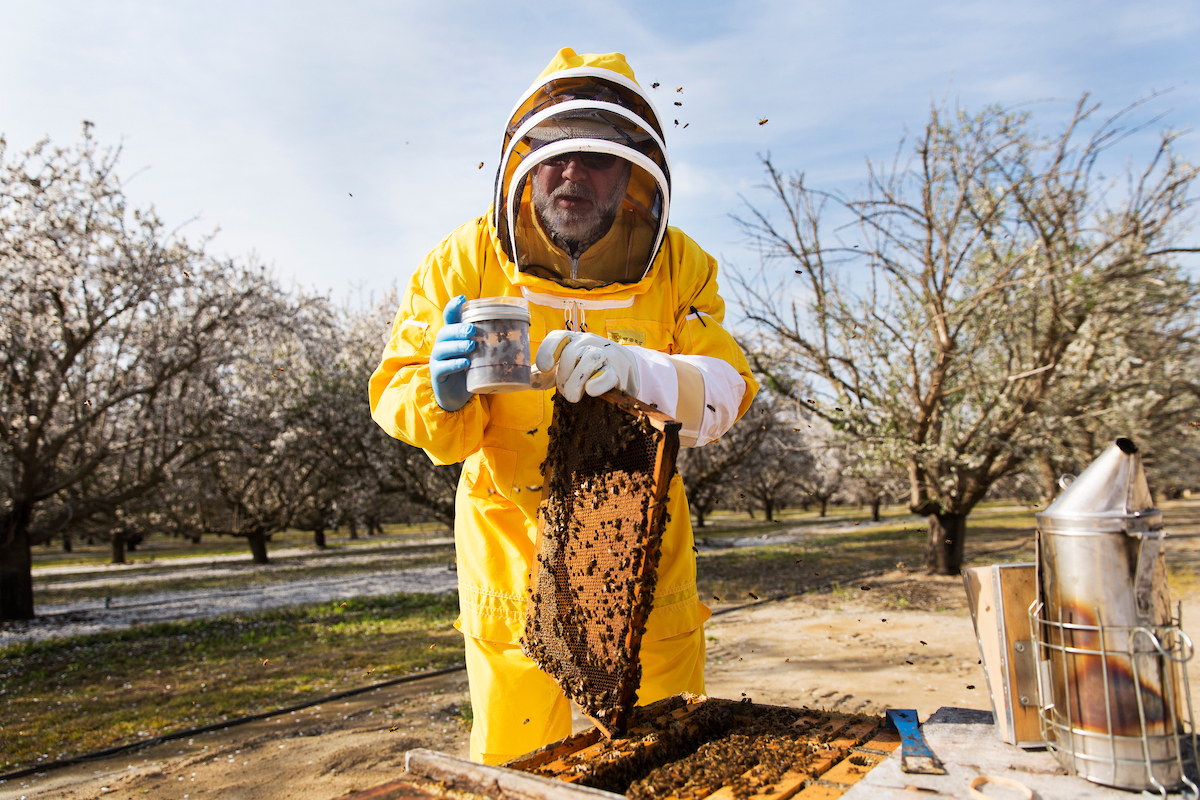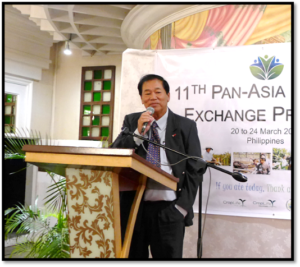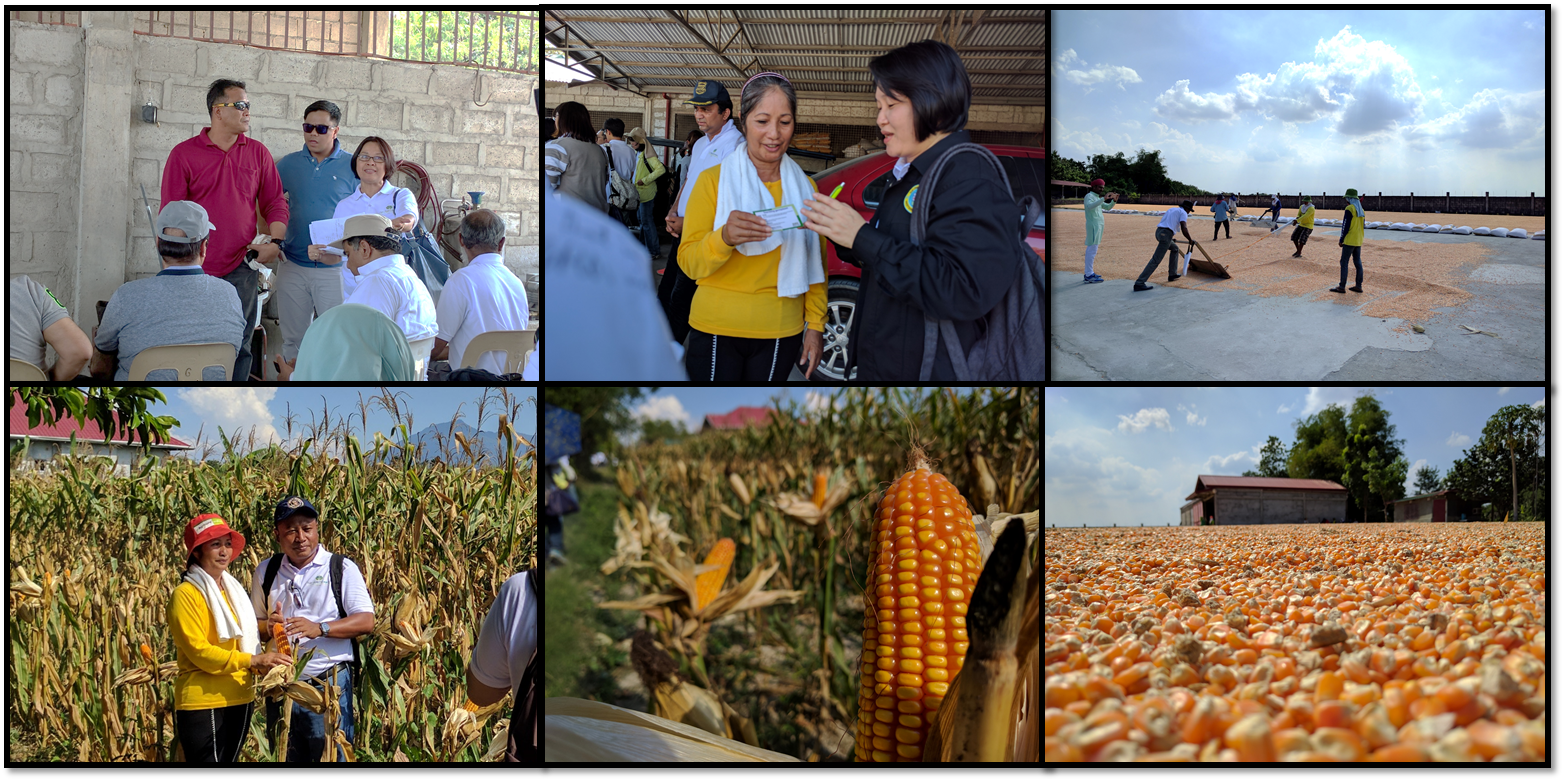By: CropLife International
How is investing in agriculture key to reducing poverty around the world? Find out in the below GIF:
By: CropLife International
How is investing in agriculture key to reducing poverty around the world? Find out in the below GIF:
By: CropLife International
How can biotechnology and crop protection products enhance the content and availability of nutritious foods, thereby improving human nutrition? Dr. Martina Newell-McGloughlin, director of research for higher education, Abu Dhabi Education Council, talks about potential of plant science to improve public health.
By: CropLife International
Did you know that more than 1 million children could be saved each year by breeding crops for enhanced nutritional content?
The plant science industry is working to improve public health worldwide. Watch our video to see how:
By: International Service for the Acquisition of Agri-biotech Applications (ISAAA)
The Philippine media developed a matured editorial position over 17 years of modern biotechnology reporting, according to the new publication of ISAAA titled From Fear to Facts: 17 Years of Agri-biotech Reporting in the Philippines (2000-2016). The publication is based on a study conducted by ISAAA and SEARCA Biotechnology Information Center published in the April 2017 issue of Philippine Journal of Crop Science.
The initial 10-year study (2000-2009) authored by Dr. Mariechel Navarro and colleagues showed that majority of the reports from the top newspapers, Manila Bulletin, Philippine Daily Inquirer, and Philippine Star were about the development and commercialization of biotech corn in the Philippines. The coverage was high in terms of the number of articles, but sensationalism and speculations were evident, since a biotech crop was just introduced and commercialized in the country. Negative metaphors such as “frankenfood” and “poison” were commonly used in the initial years of reporting. The follow up study (2010-2016) conducted by Kristine Grace Tome, Dr. Navarro, and colleagues showed that the use of fear metaphors declined, and an increasing effort to present science-based information became more evident in the succeeding years. More positive metaphors such as “new hope”, “answer to farmers’ dreams”, and “light of hope” were used in the articles depicting favorable potential or promise of the technology. Bt eggplant development and field trial case sparked the interest of journalists to write about biotechnology. Articles from Business Mirror were also included in the analysis of 2010-2016 articles due to its high coverage on biotechnology.
Media practitioners and scientists were encouraged to continue to collaborate to sustain media coverage of biotechnology in the Philippines. With the increasing use of social media, a new breed of information seekers and producers could help revolutionize discourses on biotechnology not just in the Philippines, but also in other countries.
Download the publication from the ISAAA website. Get a copy of the research article for more details.
This article was published in ISAAA’s Crop Biotech Update. See original article link here.
By: CropLife International
Australia has one of the world’s healthiest honey bee populations, which pollinates roughly 65 percent of the nation’s crops. And it works hard to keep it that way using new technology, such as the BeeConnected app.
CropLife Australia – in partnership with the Australian Honey Bee Industry Council and with the support of national farming organizations – created the novel smart phone app in September 2014, which enables collaboration between farmers and beekeepers. BeeConnected is a user-driven communication and coordination tool that uses GPS capability to allow farmers to easily log the location of their properties through Google Maps. Beekeepers can also use the same functions to log the present and future locations of their beehives. When a beehive is logged near a farmer’s property, users within the area are sent automated notifications and can chat about their activities via a secure messaging service.
The great thing about the app is that farmers and agricultural service contractors can share information about the time and location of a crop protection product application. They are then connected with beekeepers in their area by the same alert and messaging system. This communication protects bees by ensuring they are not pollinating during application times.
Since its launch, all of Australia’s state farmer organizations and several key agricultural producer groups have joined the BeeConnected initiative as official supporters and promote the use of the smartphone app among their members. Following the success in Australia, the app has been licensed in Canada and India, and there are plans for it to spread even further.
This article was published and created by CropLife International. See original post here.
By: CropLife International
Bees, butterflies, beetles and other insects are natural pollinators that play a role in agriculture but honey bees are arguably the most important. Keeping these hard-working insects healthy is essential not only to grow crops but also to ensure farmers can turn a profit and ultimately, help feed the world.
This post , including all infographics, was published and created by CropLife International. See original post here.
By: CropLife International
More than 80 percent of the world’s almonds come from California and they rely entirely on pollination from honey bees to deliver a successful crop; roughly 1.6 million colonies are required every bloom period to pollinate the crop. Unfortunately, honey bees are being threatened there and other geographies by several factors – perhaps the most dangerous of which is a parasitic mite called the Varroa destructor. CropLife International “Food Hero” Dick Rogers, manager of the Bayer Bee Health Research Program in Raleigh, N.C., USA, discusses his efforts to fight the mite and protect pollinators in almonds.

Dick Rogers, the manager of the Bee Care Center Bee Health Research Program in Raleigh,
North Carolina, opening bee hives to check for mites, Shafter, California.
The sheer size of the crop means there can’t be enough local honey bees to pollinate it. Farmers need to supplement with managed [commercial] pollinators like honey bees, which are easy to increase in number to meet that demand. In a scenario where there are no bees for pollinating almonds, there probably would not be any commercial crop.
The general recommendation is to use two colonies of honey bees [roughly 40,000-100,000] for each acre of almonds. That’s true for most crops, one to two colonies per acre, but some crops like blueberries can go up to 10 colonies per acre.
If you have a Varroa mite infestation [usually after three or four years], you are 100 percent guaranteed to lose your colony. We are working on mite management tactics, including treatments. We’re developing new varroacide compounds to control mites because beekeepers need more tools.
A varroacide is a class or group of chemicals used to control Varroa mites. There are already products on the market; some work better than others and some don’t work as well as they once did, so we are trying to find new compounds to circumvent insect resistance. We’re looking at both natural and synthetic compounds. We have nine candidate compounds that may have enough potential to develop as new products.
Plastic strips with the varroacide are placed in the hives. The varroacide is transferred to mites by bees walking over the strips, picking up molecules of the active ingredient and then passing it around the hive. The strips do not break down in the hives and are effective for 42 days.
The mite can become resistant if a compound is used too frequently. Some formerly effective products now show resistance in certain instances, so they are used less and less. If we’re going to find new products, we need to know which compounds the mites can tolerate and which they can’t.
To develop a treatment for mites is quite a tricky undertaking because you want it to be effective on the mites, but not against the bees. We have to come up with a dose that targets the mite only.
It would make bees more readily available. It would also help beekeepers expand their operations and increase colonies without having to deal with damage caused by the mites. If they had healthy bees because of an effective treatment, they could do a lot more, allowing for larger numbers of better quality bees with longer lives. That would indirectly help almond growers because there would be a more guaranteed supply of bees.
This article and the images included were published and created by CropLife International. See original post here.
By: CropLife International
Did you know, the global honeybee population has risen by nearly 26% since 1995? See how the farmers and beekeepers are working together to protect the world’s pollinators.
This post and video were published and created by CropLife International. See original post here.
 On March 20-24, a total of 63 participants from eleven countries, which are Australia, Bangladesh, China, India, Indonesia, Korea, Pakistan, Philippines, Taiwan, Thailand and Vietnam, joined the 11th Pan-Asia Farmers Exchange (FX) Program. The group included farmers and farmer leaders, regulators, government officers, academicians, media personnel and industry partners.
On March 20-24, a total of 63 participants from eleven countries, which are Australia, Bangladesh, China, India, Indonesia, Korea, Pakistan, Philippines, Taiwan, Thailand and Vietnam, joined the 11th Pan-Asia Farmers Exchange (FX) Program. The group included farmers and farmer leaders, regulators, government officers, academicians, media personnel and industry partners.

Dir. Wilfredo Roldan, Executive Director of the Philippine Fertilizer and Pesticide Authority, together with Atty. Francis Badilla, Deputy Executive Director for Fertilizer, graced the event and delivered a short message for the participants during the biotech seminar. Attendees learned about plant biotechnology and its benefits, the importance of science-based and functional biosafety regulatory framework, and the different agricultural and biotech status and experiences of each country. Besides the seminar briefings, the participants also visited different facilities at the International Rice Research Institute (IRRI), and learned more about the Iron and Zinc fortified rice and the Golden Rice. They also learned more about seed quality assurance and packaging at the Monsanto Philippines Inc Refuge-in-Bag (RIB) Plant.
They were able to engage with actual GM corn farmers by visiting GM commercial farms organized by Syngenta. Mrs. Julie Medina, farmer leader of Barangay San Bartolome, Concepcion, Tarlac, and two young farmers, Gerry Basilio and Floyd Torla, shared how GM corn greatly improved their livelihood.

The program received good feedback from the participants, stating that they learned a lot and will continue to share, exchange and promote the knowledge and information gained from the event. The FX Program was jointly organized by CropLife Asia (CLA), CropLife Philippines (CLP) and its members, and the Biotechnology Coalition of the Philippines (BCP).